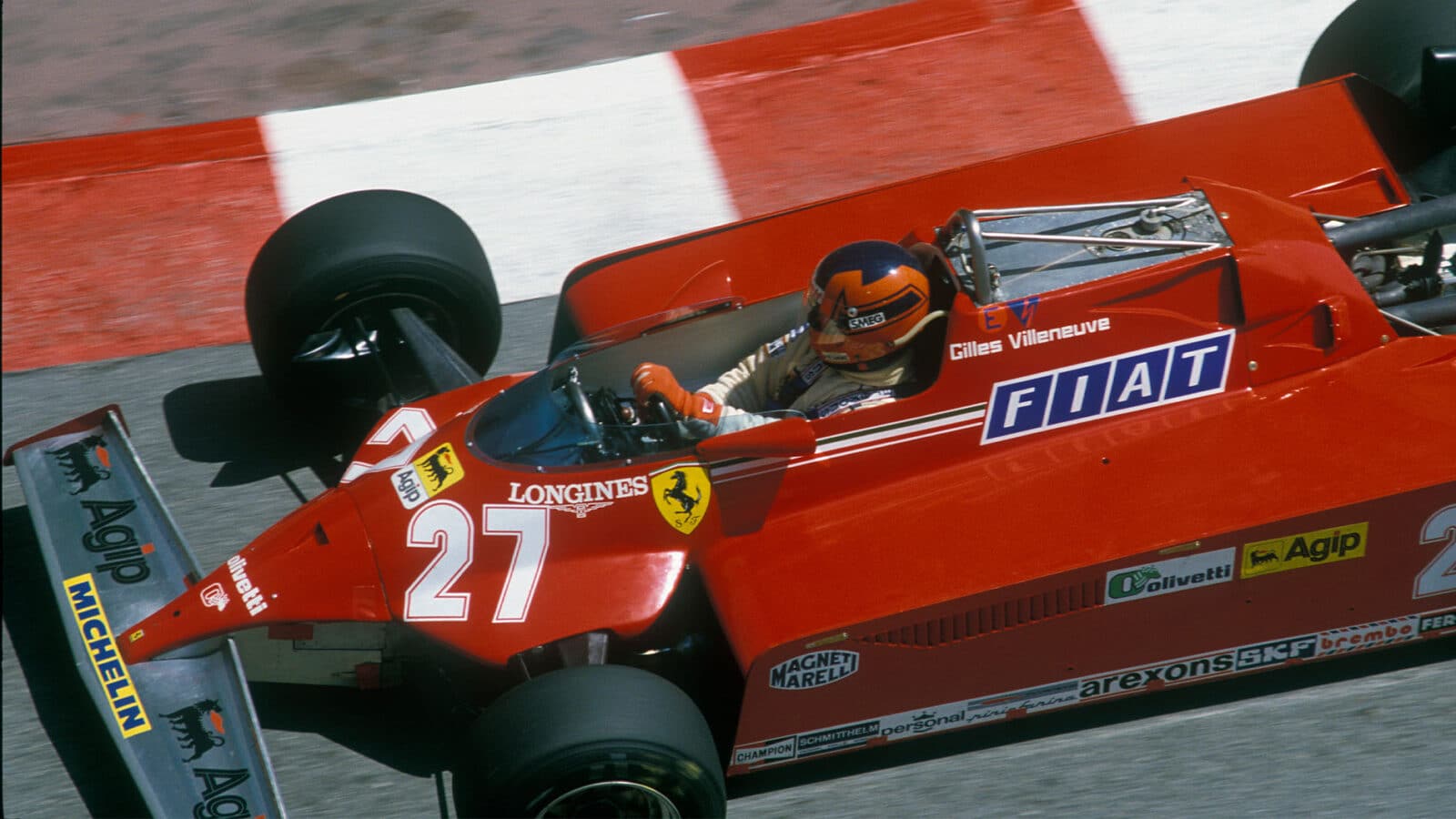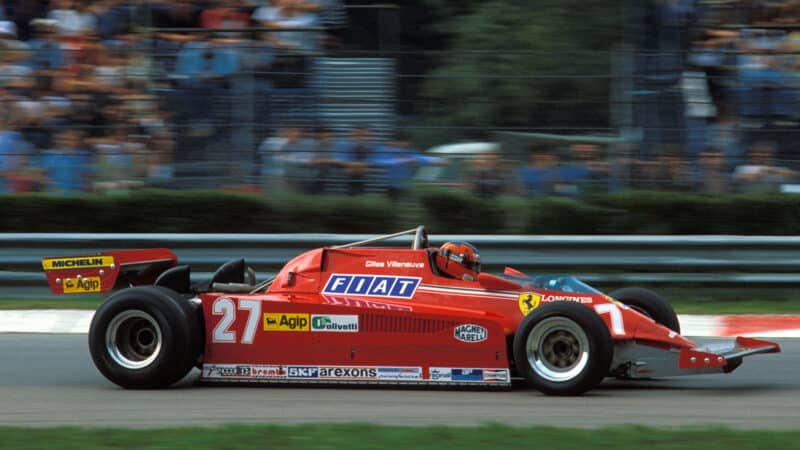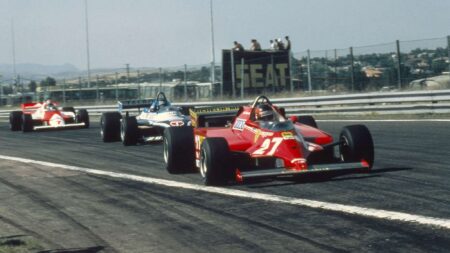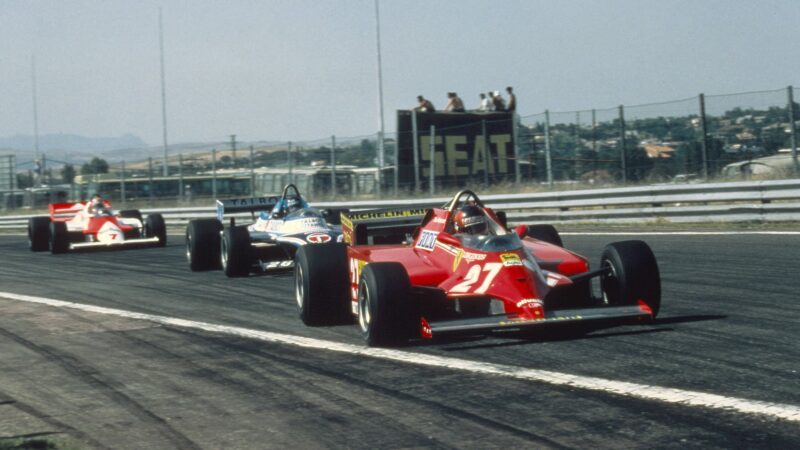Air intakes for the compressors were mounted on each side of the fuel tank and the compressed air feed ran via a boost pressure relief valve into intercoolers in the sidepods. From these the cooled intake air ran back and up to the intake manifolds. A transverse gearbox was employed, and the 126CK’s overall dimensions were quoted as being almost identical to the 3litre ‘boxer’ engined 312T5 which had shown such disappointing form in 1979 with Villeneuve and Jody Scheckter at the wheel. Although the handling of the first Ferrari turbo was pretty lurid around Imola, Villeneuve gave it his all, revelling in the power. During qualifying he posted a 1min35.751sec best which was 0.6sec faster than he managed at the wheel of the 312T5, even though he eventually drove the flat-12-engined car in the race itself.
Over the winter of 1980-1981 the Ferrari 126 underwent an intensive programme of test and development work, most of which centred around the KKK-turbocharged version of the V6 engine. In addition, however, Maranello’s Formula 1 technical chief Mauro Forghieri investigated a new system of forced induction which had been developed by the Swiss Brown-Boveri company. Its Comprex system was a directly driven supercharger. Winter tests suggested that the Comprex system might have an F1 application and Villeneuve actually practised the shrill Comprex-equipped Ferrari 126 for the 1981 US GP West at Long Beach. In the end Ferrari chose the KKK turbo, feeling it had more long-term potential. The Comprex car never raced.
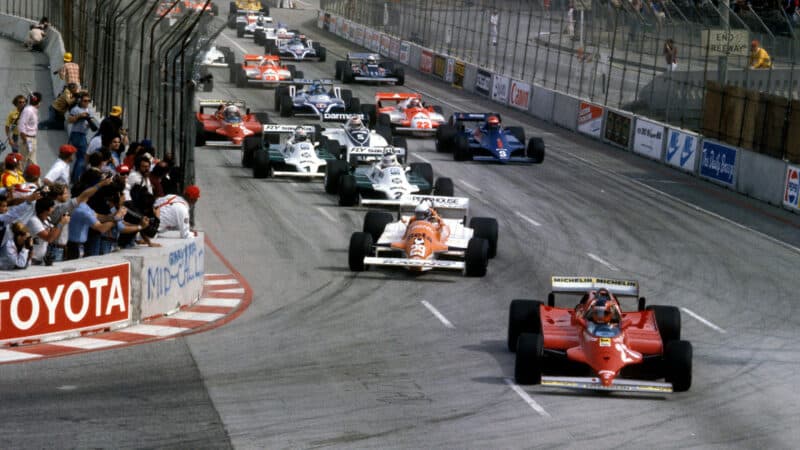
Villeneuve briefly claimed the lead at Long Beach ’81 – then overshot the first corner
The 126CK still had considerable problems in both the chassis and the throttle response departments which made it a difficult proposition for 1981 drivers Villeneuve and Didier Pironi. Nevertheless, the Ferrari turbo led for a few yards in its opening race at Long Beach although Villeneuve ran wide into the escape road at the first hairpin. Gilles eventually retired with transmission failure while Pironi, who was dicing with Mario Andretti’s V12 Alfa Romeo 182, lasted a little longer before stopping with a broken engine. From California the F1 tour went to Brazil and Argentina where both cars struggled. Villeneuve retired in Brazil with a broken turbo wastegate and pulled up with a snapped driveshaft in Buenos Aires. Pironi spun off in Brazil, tangling with Alain Prost’s Renault in the process, and suffered engine failure three laps into the Argentine round.
By the time the team appeared on home soil for the first San Marino GP at Imola the 126CKs had undergone plenty of chassis alterations. Villeneuve’s race car featured revised front suspension pick-up points and a longer wheelbase, but in the end he preferred the feel of the team’s shorter wheelbase spare, which he used — much to the crowd’s delight — to take pole ahead of Carlos Reutemann’s Williams FW07C.
